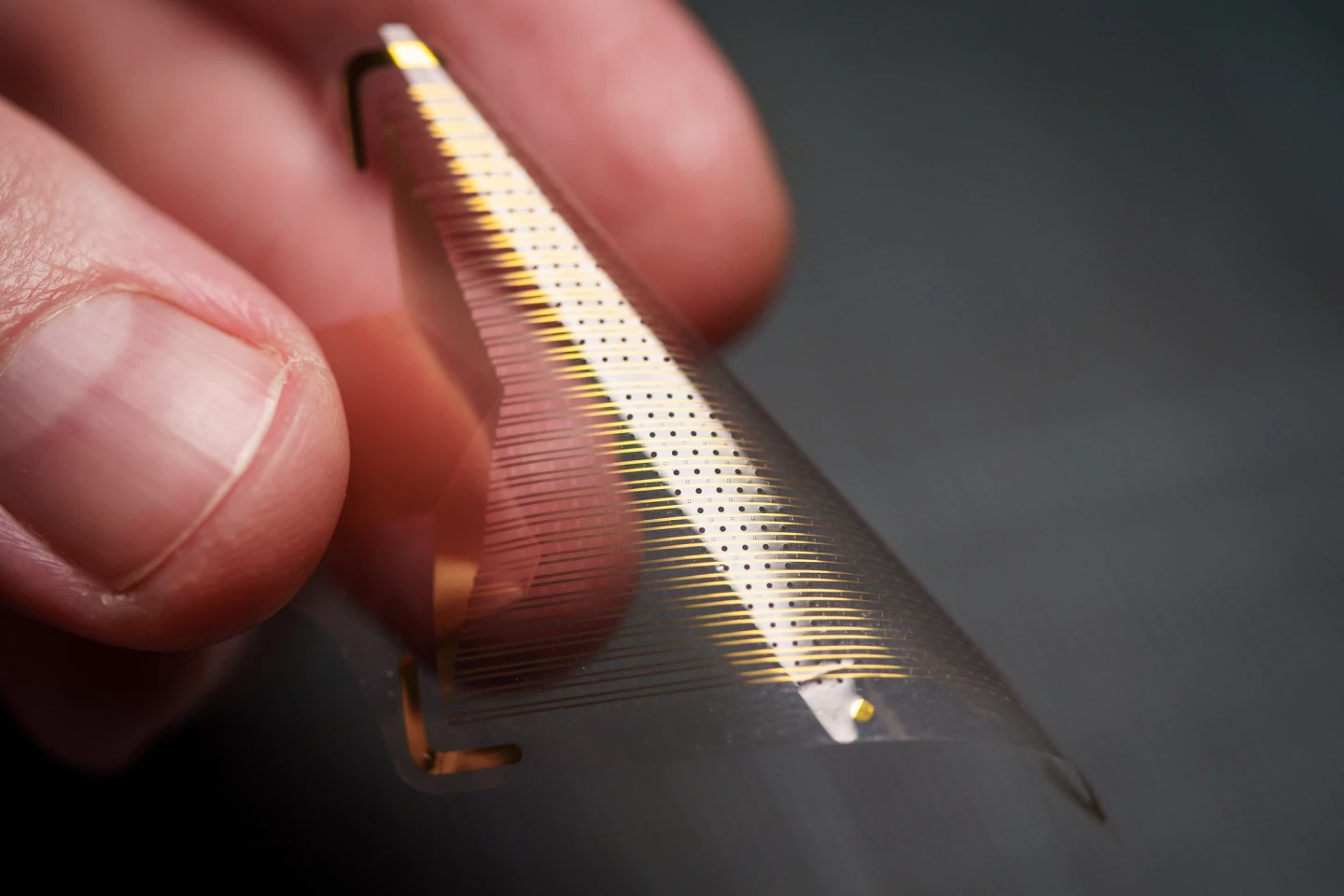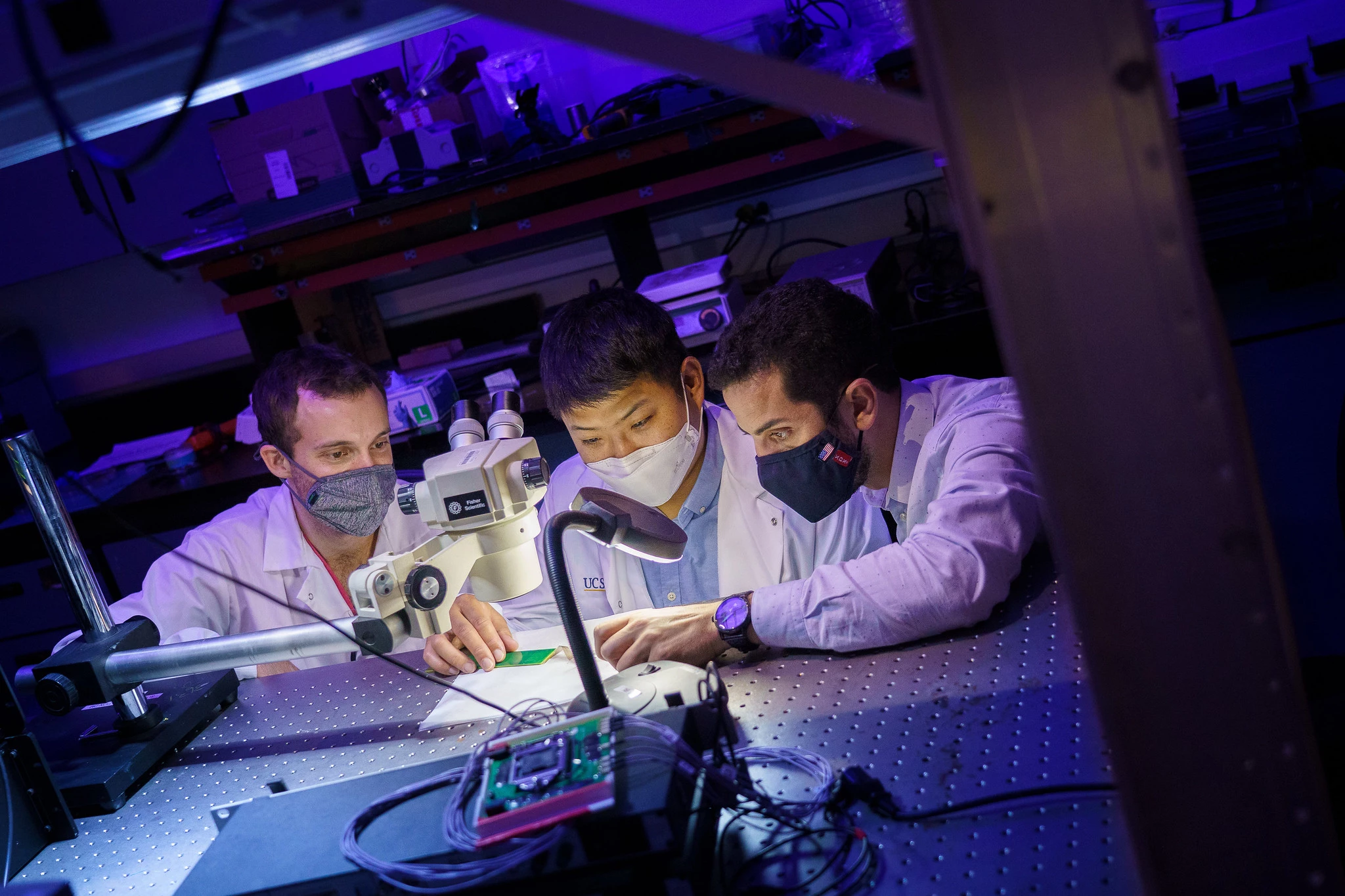Scientists have developed an advanced new brain sensor that promises to take the safety and efficiency of cancer and epilepsy treatment into new terrain. The groundbreaking device is able to record electrical signals from the brain's surface in record-breaking resolution, which can help neurosurgeons better distinguish between healthy and diseased tissue, and also deepen our understanding of how the human brain functions.
The novel device is the handiwork of engineers at the University of California (UC) San Diego, and is what is known as an electrocorticography (ECoG) sensor. These sensors are commonly placed on the exposed brain cortex during surgery to record the emanating electrical signals, and reveal which regions of the brain tissue are active. This can in turn enable neurosurgeons to safely remove brain tumors or sections of tissue where epileptic seizures are originating, while leaving healthy tissue untouched.
Being able to do so with greater precision would therefore improve the preservation of healthy, functioning brain tissue, and this is the goal being pursued by the UC San Diego researchers. The ECoG devices in use today are mostly comprised of somewhere between 16 and 64 sensors, though some research-grade examples can include up to 256. The UC San Diego team was able to produce ECoG grids with either 1,024 or 2,048 sensors, through some key engineering breakthroughs.

Clinically approved ECoG grids feature sensors spaced a centimeter (0.4 in) apart, to avoid problematic interference between them. The team was able to produce grids with a far greater density, by using nanoscale platinum rods, which offer a greater sensing surface area than the flat platinum sensors used today, and allow for placement of 100 sensors per unit area instead of one, or 100 times the spatial resolution.
These rods are placed one millimeter apart on a flexible, biocompatible material called parylene, with the resulting sensor grids around 100 times thinner than those used today, at around 10 micrometers thick or around one tenth the size of a human hair. This thinness and flexibility enables the sensor grid to better adhere to the brain during subtle movements, like those driven by heartbeats, for example, enabling closer connection and clearer readings.
The scientists demonstrated the capabilities of their new sensor grids through a series of experiments, which included using the 1024-sensor version to directly record signals from brain tissue of 19 patients undergoing surgery. They also used the sensors to map key regions of the brain in four different subjects during motor tasks, and also used them to map the cortical column of a rat brain for the first time, something that had only been achieved before with a needle and electrical stimulation.

With a view to offering new options for sufferers of treatment-resistant epilepsy and brain tumors, the researchers are now working toward clinical approval of the technology. Among their ambitions moving forward is the development of a wireless version, which could be used for up to 30 days at a time. In addition, the scientists hope that the technology can further our understanding of how the brain works by interpreting its electrical signals as certain tasks are undertaken.
Monitoring and interpretation of these brain waves is a highly active field of study that could have wide-ranging ramifications, from enabling mind control of prosthetic limbs, to treating memory loss, to interacting with the digital world without the need for smartphones. The team explored this by using the sensors to monitor brain activity associated with finger sensation and hand grasping.
The video below provides an overview of the research, which was published in the journal Science Translational Medicine.






